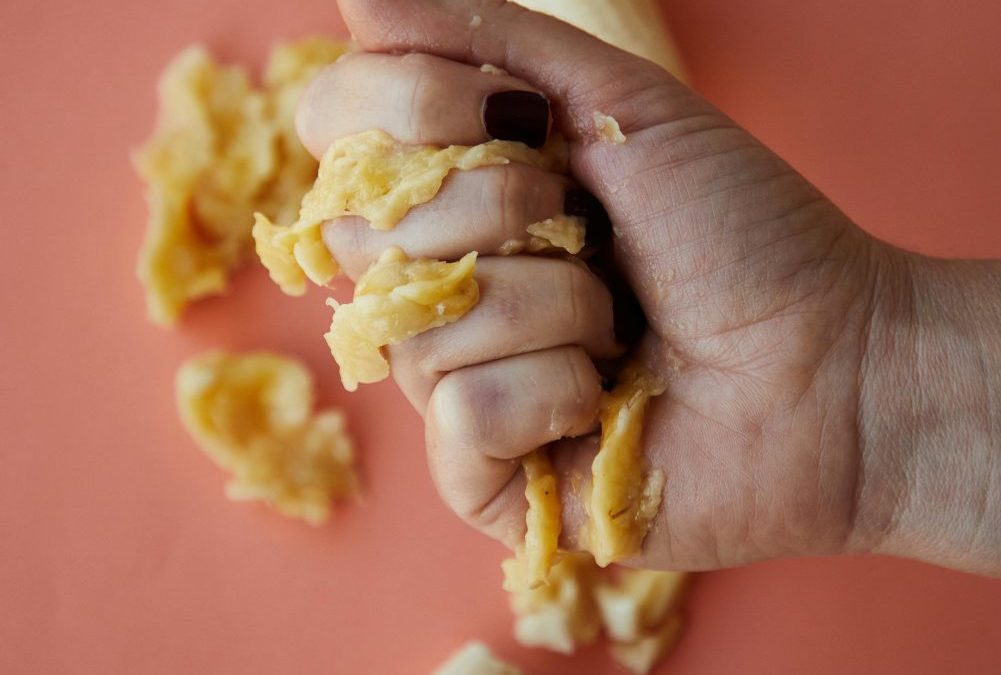Last Updated on: 14th July 2024, 09:29 am
Introduction to Bone Health and Exercise

At the core of a vibrant life lies the health of our bones. Essential for mobility, protection, and overall well-being, bone health cannot be overlooked. Exercise, a powerful ally, plays a pivotal role in fortifying our skeletal framework. This article aims to shed light on the symbiotic relationship between physical activity and bone strength, guiding readers on a path to maximizing the benefits of exercise for bone health.
- Engaging in regular physical activity not only boosts muscle strength but also significantly enhances bone density.
- The mechanics are fascinating; through dynamic and weight-bearing exercises, bones are encouraged to adapt, becoming denser and stronger.
- This process is crucial for preventing osteoporosis and reducing the risk of fractures, underscoring the importance of incorporating exercise into our daily routines.
Understanding the impact of exercise on our bones is the first step towards a healthier future. Let this article serve as your compass, navigating through the essentials of bone health and the transformative power of exercise. Together, let’s embark on a journey towards stronger bones and a more resilient body.
Understanding Bone Density and Its Importance

Bone density, a key indicator of bone health, reflects the amount of bone mineral in bone tissue. The significance of bone density lies in its ability to predict the risk of fractures and osteoporosis, making it a critical aspect of overall health. High bone density suggests strong bones, while low bone density can signal an increased risk of breaks and chronic conditions.
- Genetics play a pivotal role, setting the baseline for our bone health.
- Lifestyle choices, including diet and physical activity, can significantly impact bone density.
- Hormonal levels and age also contribute, with bone density naturally declining as we age.
The consequences of low bone density are far-reaching. It heightens the risk of fractures, which can lead to decreased mobility and independence. Moreover, it can escalate into osteoporosis, a condition characterized by porous and fragile bones. This underscores the importance of maintaining optimal bone density through proactive measures, such as engaging in regular weight-bearing and strength-training exercises.
Integrating exercise into our daily lives is not just beneficial; it’s essential for bone health. By understanding the critical role of bone density and taking steps to enhance it, we can pave the way for a stronger, healthier future.
The Science Behind Exercise and Bone Strengthening

How Physical Activity Stimulates Bone Growth
When we engage in physical activity, our bones experience a healthy stress. This stress signals our body to deposit minerals into our bones, increasing their density. It’s a natural process, akin to building muscle strength through resistance training. Just as muscles grow stronger and more resilient with use, bones similarly adapt, becoming denser and tougher in response to the demands placed on them.
Types of Exercises Beneficial for Bones
- Weight-bearing activities, such as walking, running, and dancing, force your body to work against gravity, stimulating bone growth.
- Strength training, too, plays a crucial role. Lifting weights or using resistance bands applies pressure on the bones, encouraging mineral deposits.
- Together, these exercises form a powerful duo for bone strengthening.
Age-Related Considerations in Exercise Routines
As we age, our approach to exercise must evolve. Younger individuals might focus on building bone density through high-impact activities. However, for older adults, the emphasis shifts towards maintaining bone health and preventing loss. Low-impact exercises, such as swimming and cycling, become more significant, alongside moderate strength training. Tailoring exercise routines to one’s age ensures that the benefits of physical activity are maximized, safeguarding bone health at every stage of life.
Understanding the science behind exercise and bone strengthening illuminates the path to a healthier future. By incorporating the right mix of physical activities into our daily routines, we can fortify our bones, enhancing our overall well-being. It’s a testament to the body’s remarkable ability to adapt and strengthen, regardless of age. Embrace the challenge, and let the transformative power of exercise work its magic on your bones.
Key Exercises for Maximizing Bone Health

Weight-bearing Exercises and Their Benefits
- Weight-bearing exercises, such as walking, jogging, and stair climbing, are the cornerstone of a bone-healthy lifestyle.
- By compelling your body to resist gravity, these activities stimulate bone formation and slow down bone loss.
- Regular engagement in weight-bearing exercises not only enhances bone density but also improves cardiovascular health, making it a win-win for overall well-being.
Resistance Training: Techniques and Precautions
Resistance training, involving the use of free weights, weight machines, or resistance bands, is pivotal for bone strength. It applies stress to the bones, encouraging them to rebuild and become stronger. Start with lighter weights, focusing on proper form to maximize benefits and minimize injury risk. Gradually increase the intensity under the guidance of a fitness professional to ensure safety and effectiveness.
However, caution is paramount. Overloading or incorrect form can lead to injuries. It’s essential to listen to your body and adjust your routine as needed, especially if you’re new to resistance training or have existing health concerns.
Flexibility and Balance Exercises to Support Bone Health
- Flexibility and balance exercises, such as yoga and tai chi, complement weight-bearing and resistance training by enhancing stability and reducing the risk of falls.
- These low-impact activities improve muscle strength, coordination, and balance, crucial for protecting bones from fracture-inducing falls.
- Incorporating these exercises into your routine not only supports bone health but also promotes overall physical and mental well-being.
Together, these exercises form a comprehensive approach to maintaining and improving bone health. By integrating weight-bearing activities, resistance training, and flexibility and balance exercises into your routine, you can build stronger bones and a more resilient body. Remember, consistency is key. Regular physical activity, tailored to your individual needs and abilities, is essential for maximizing the benefits for your bones.
Nutrition and Supplements for Bone Strength

Central to bone health are calcium and vitamin D, indispensable allies in the quest for strong bones. Calcium serves as the building block, while vitamin D enhances its absorption, ensuring that our skeletal system remains robust and resilient. Together, they form a formidable duo against bone deterioration.
Dietary sources rich in calcium include dairy products like milk, cheese, and yogurt, alongside leafy greens, almonds, and fortified foods. For vitamin D, sunlight exposure is key, yet fatty fish, egg yolks, and fortified products also contribute to our intake. Embracing these natural sources is the first step towards nourishing our bones from within.
However, when diet and sunlight fall short, supplements step in to fill the gap. They offer a targeted approach to meeting our daily needs, particularly for individuals at risk of deficiency. But caution is advised. Excessive intake can lead to adverse effects, highlighting the importance of moderation and professional guidance.
Supplements are not a one-size-fits-all solution. They’re beneficial when dietary intake is insufficient or when specific health conditions hinder absorption. Consulting with a healthcare provider ensures that supplementation is both necessary and tailored to individual requirements, minimizing risks and maximizing benefits.
Understanding the synergy between nutrition, supplements, and exercise paves the way for optimal bone health. It’s a holistic approach, combining the strength of our diet with the power of physical activity to build a foundation that supports our body through every stage of life.
Overcoming Barriers to Exercise

Staying active is a journey filled with hurdles, yet overcoming them is crucial for bone health. Common challenges include:
- Time constraints
- Lack of motivation
- Physical limitations
The key to success lies in recognizing these barriers and strategically navigating past them.
To maintain momentum:
- Setting realistic goals and celebrating small victories can be incredibly motivating.
- It’s about creating a routine that resonates with personal interests—whether that’s a dance class, a brisk walk in the park, or a yoga session.
- The thrill of progress, no matter how incremental, fuels the desire to persevere.
For those with varying abilities or health conditions, adaptation is the name of the game. Exercises can be modified to meet individual needs, ensuring everyone has the opportunity to benefit from physical activity. Consulting with professionals who understand the nuances of exercise adaptation can lead to a tailored, effective, and safe workout regimen.
Remember, every step taken is a step towards stronger bones. By embracing these strategies, barriers become mere stepping stones on the path to a healthier, more vibrant self.
Creating Your Bone-Strengthening Exercise Plan

Embarking on a journey to bolster bone health begins with a clear understanding of where you stand. Assessing your current bone health status is a pivotal first step. This involves:
- Evaluating your lifestyle
- Dietary habits
- Hereditary factors that may influence your bone density
It’s a foundation upon which realistic goals can be set.
Setting achievable targets is next. Whether it’s:
- Improving bone density
- Enhancing overall strength
- Reducing the risk of fractures
Your goals should be clear and measurable. Tracking progress is equally important, serving as a motivational tool and a guide for adjustments in your routine.
However, the path to stronger bones is not one to walk alone. Consulting with healthcare professionals is crucial. They provide personalized advice, tailoring exercise plans to your unique needs and ensuring that your approach to bone strengthening is both safe and effective. This collaboration is essential, as it aligns your efforts with your health status and goals.
Together, these steps form the cornerstone of a successful bone-strengthening exercise plan. By assessing your current status, setting realistic goals, tracking progress, and seeking professional guidance, you’re not just working towards stronger bones. You’re paving the way for a healthier, more vibrant life.
In Closing
Exercise fortifies bones, enriching life’s quality. It’s a journey of resilience, blending challenge with triumph. Through strategic, varied physical activities, we unlock the potential for stronger, healthier bones, navigating age and lifestyle with grace. Embrace this path to vitality, letting each step towards bone health inspire a future of unwavering strength and joy.
Exercise and Bone Health: Maximizing Benefits FAQs
Exercise can significantly slow the rate of bone loss and, in some cases, may even help increase bone density in certain individuals. High-impact exercises and resistance training are particularly effective in stimulating bone growth and improving bone density. However, the extent of reversal depends on factors such as age, hormone levels, and the duration and intensity of the exercise.
High-impact exercises can increase the risk of injury in individuals with existing bone conditions or low bone density. However, for healthy individuals, these exercises are beneficial for building stronger bones. It’s important to start gradually and increase intensity over time to allow the bones to adapt.
As people age, the ability to build bone density through exercise decreases, making early and consistent exercise crucial. However, exercise remains important for maintaining bone health and reducing the rate of bone loss in older adults. Tailoring exercise types and intensities to one’s age and bone health status is essential for maximizing benefits and minimizing risks.
Exercise stimulates bone formation, leading to increased bone density. Weight-bearing and resistance exercises are particularly effective because they force the body to work against gravity, which encourages bone growth. Regular physical activity also improves balance and coordination, reducing the risk of falls that can lead to fractures.
Menopause accelerates bone density loss due to decreased estrogen levels, making exercise even more crucial for women during and after this life stage. Weight-bearing and strength-training exercises can help mitigate bone loss associated with menopause. Additionally, incorporating balance and flexibility exercises can reduce the risk of falls, protecting bone health.
For optimal bone health, aim for at least 30 minutes of weight-bearing or resistance exercise on most days of the week. Consistency is key, as regular exercise is more effective at stimulating bone growth and maintaining bone density. It’s also important to gradually increase the intensity and duration of workouts to continuously challenge the bones.
It is never too late to start exercising for bone health, as exercise can benefit bones at any age. Even in older adults, starting an exercise regimen can help slow the progression of bone density loss and improve overall physical function. The key is to choose low-impact exercises if starting later in life, to minimize the risk of injury.
Genetics play a significant role in determining baseline bone density and how well an individual might respond to exercise for bone health. While you can’t change your genetic predisposition, engaging in regular exercise can help maximize your bone density potential. Understanding your genetic background can help tailor a more effective exercise and nutrition plan for bone health.
A balanced diet rich in calcium and vitamin D is crucial for supporting the bone-building process that exercise stimulates. Calcium provides the building blocks for bone tissue, while vitamin D enhances calcium absorption and bone growth. Combining a healthy diet with regular exercise maximizes bone strength and reduces the risk of osteoporosis.
Weight-bearing exercises, such as walking, jogging, and dancing, and resistance exercises, like lifting weights, are most beneficial for strengthening bones. These activities apply stress to the bones, which prompts bone-forming cells to increase bone mass. Incorporating a variety of these exercises can ensure a comprehensive approach to bone health.
Orlando is a all round athlete from Australia, now resident in Germany. His sports of passion of American Football(Offensive line), weight training and indoor rock climbing where he uses his 195cm wing span to his advantage.



